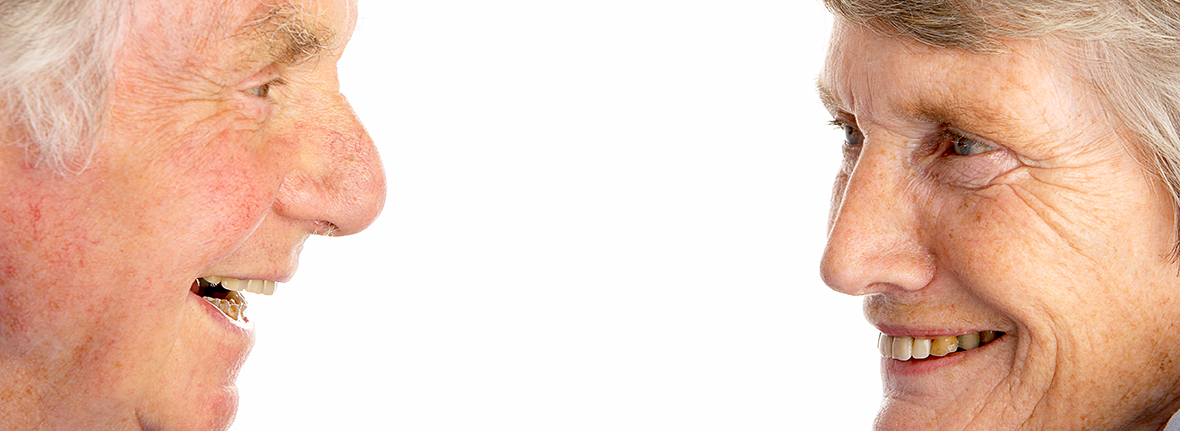Previous studies have found that approximately 25% of the variation in lifespan is caused by genetic factors. With regard to the variation in our physical and cognitive abilities in extreme old age, about 50% of the variation in lifespan can be attributed to genetic factors. We only know few specific genes of importance, but if these genes are identified they can possibly establish a basis for a better understanding of loss of physical abilities and early mortality as well as a possible intervention.
However, the aging process is extraordinarily complex, so it will not be sufficient only to study the biological components. Social factors and health behavior will also have a great influence on the aging processes and lifespan; but the question is, to what extent does a genetic predisposition for good health prove to be robust with regard to a social class impact. Recent research suggests that strain throughout life – from fetal stage to old age - is affecting the aging process. Favourable conditions later in adult life may be able to compensate for strains early in life, but genetic factors and favourable social conditions early in life may also produce resources enough to endure strains later in life.
Other key research questions, which the Danish Aging Research Center will focus on:
The increasing average lifespan – is it good years being added to life?
Over the last 150 years, the average lifespan for Danes has increased significantly. The question is however, whether it is good and active years being added to life or is it years which are characterized by decreased physical abilities and illness. Studies indicate that we are surviving serious illnesses to a greater extent than earlier, but comparisons between various birth cohorts indicate that the concomitant loss of physical abilities is relatively small. The subject is however sparsely elucidated.
Have we met the limit for human lifespan progress?
Since the 1950s it has been a known theory that the telomeres that hold the human genome shortens with every cell division and when the length of the telomeres reaches a critical level, the cell will not be able to divide further. That is why the length of the telomere is designated as an upper limit for human longevity. But is it true that this biological component puts a limit to human longevity? For a number of years the Aarhus group has attempted to examine these hypotheses in detail, among other things on the basis of the question whether women’s better survival rate in proportion to men’s rate is affected by this molecular mechanism.
Why do males live shorter than females when they seem to have better health?
Most studies show that males in general are significantly healthier than females and that they have higher physical abilities. It is therefore a paradox that women of all ages still have a lower mortality rate. A possible explanation for this phenomenon could be the chromosome difference. To test the validity of this hypothesis, data from the longitudinal cohort study of extreme old age are combined with the molecular and genetic expertise in Aarhus/Vejle.
Are environmental stressors important parameters in the development of age associated diseases?
We are constantly being exposed to stress from our environment and our own metabolism. Where reactive oxygen species (ROS) are concerned, they are being produced when DNA, RNA and proteins are oxidized, which can lead to a reduction in the body´s macromolecules. We are planning to examine the degree of the oxidized process in aged individuals and twins with a view to look deeper into the likelihood of whether the maintenance of DNA is reduced with age and where the molecular defect might be.
Is the length and timing of social stress in childhood and early adulthood of importance for aging and lifespan?
The importance of social breaks and mobility is generally sparingly described, but it is assumed that distressing events may increase the risk of early death and reduced lifespan. Several cohorts that the center has at its disposal make it possible to study the effect of these factors with regard to numbers, length, and timing throughout the entire life.
How important are early signs of aging?
In order to better understand the aging processes, it is important to identify early biological and physiological indicators of decline in and loss of physical abilities. It is for example significant to examine the importance of early signs of aging in middle-aged, elderly, and extremely old people.
How important are childhood circumstances in terms of early signs of aging?
Recent studies show that the interaction between birth weight, weight development, and cognitive function in youth has influence on the psychical and mental abilities in middle-age. Still, only few cohorts with data from birth to old-age have been employed, which is why there is not enough information about the interaction between strain and resources available.
Why do we age so differently?
